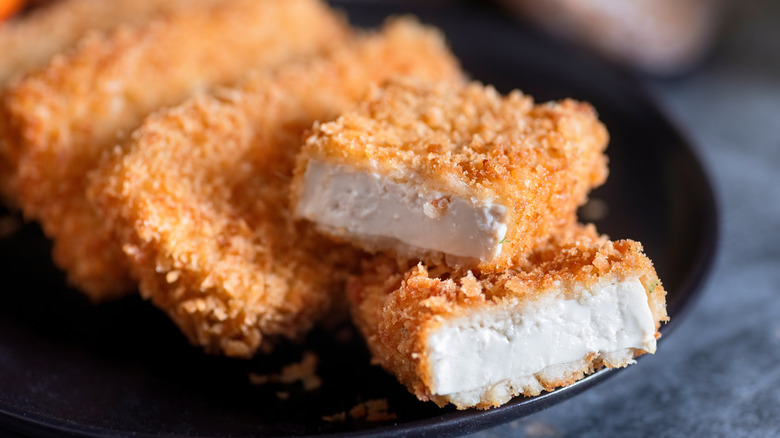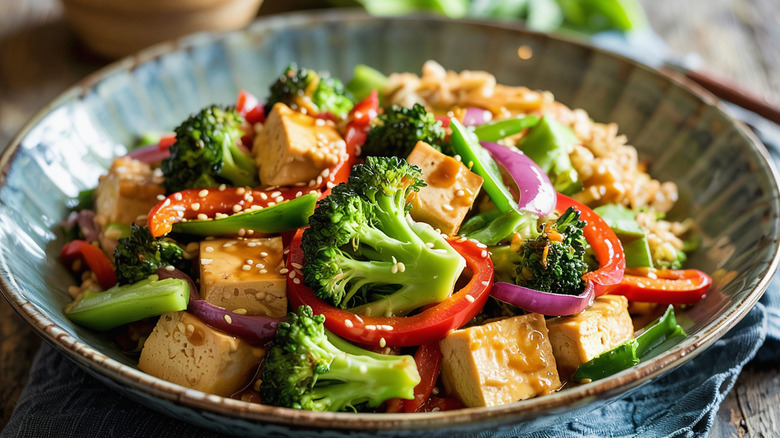How To Make Tofu Taste Like It Came From A Restaurant
Have you ever been pleasantly surprised by the taste of tofu at a restaurant? If you're like me, you've tried to replicate it at home, but it never quite tastes the same. Well, it turns out restaurants often use a lesser-known method when making tofu. According to Jem Mantiri, the vegan recipe developer, food blogger, and photographer behind the website The Fruity Jem, blanching tofu is the secret.
If you're unfamiliar with blanching, it's a process typically applied to vegetables where they're briefly boiled in water for two to four minutes then immediately removed and submerged in ice water to stop the cooking process. This helps the tofu retain a desirable flavor, texture, and color. "Blanching tofu helps to remove the 'beany' flavor that some people dislike and also helps firm it up a little bit more," Mantiri told The Takeout. Additionally, while most tofu recipes require pressing the tofu, blanching eliminates the need for this step; speeding up the cooking process.
For a five-star tofu experience, first cut the tofu into the size or shape needed then add it to a pot of boiling, salted water. The presence of salt in the boiling water is especially important, but it's not just for flavor. "The salt also helps draw out excess moisture," Mantiri continued. "Which means it'll absorb marinades or sauces better." Once the water begins to boil again with the tofu in it, lower the heat and allow it to simmer for a brief one to two minutes. Unlike blanching veggies, tofu doesn't need to be placed in ice water after it's been removed.
When it comes to tofu, blanching is key (most of the time)
"Blanched tofu is great in most recipes that use tofu," Mantiri said. "From stir-fries to soups (like miso soup), curries or crispy tofu bowls." In fact, not blanching tofu could be added to the list of common mistakes people make with tofu. While it's great to help soak up a flavorful sauce or marinade, Mantiri also recommends it in recipes where tofu might fall apart. For example, when used as a binder in vegan burgers.
Tofu in all levels of firmness can be blanched, but it's especially helpful with soft and silken tofu blocks since they have the highest water content. With these types of tofu, blanching creates the perfect balance of a soft texture with slightly chewy bite. However, for recipes that call for soft or silken tofu such as in smoothies, desserts, or baked goods where the goal is to create luscious and creamy textures, blanching isn't going to be helpful. With this simple yet transformative blanching technique, restaurant-quality tofu at home can be had. It may even leave those adverse to tofu surprised by how good it can actually taste.

